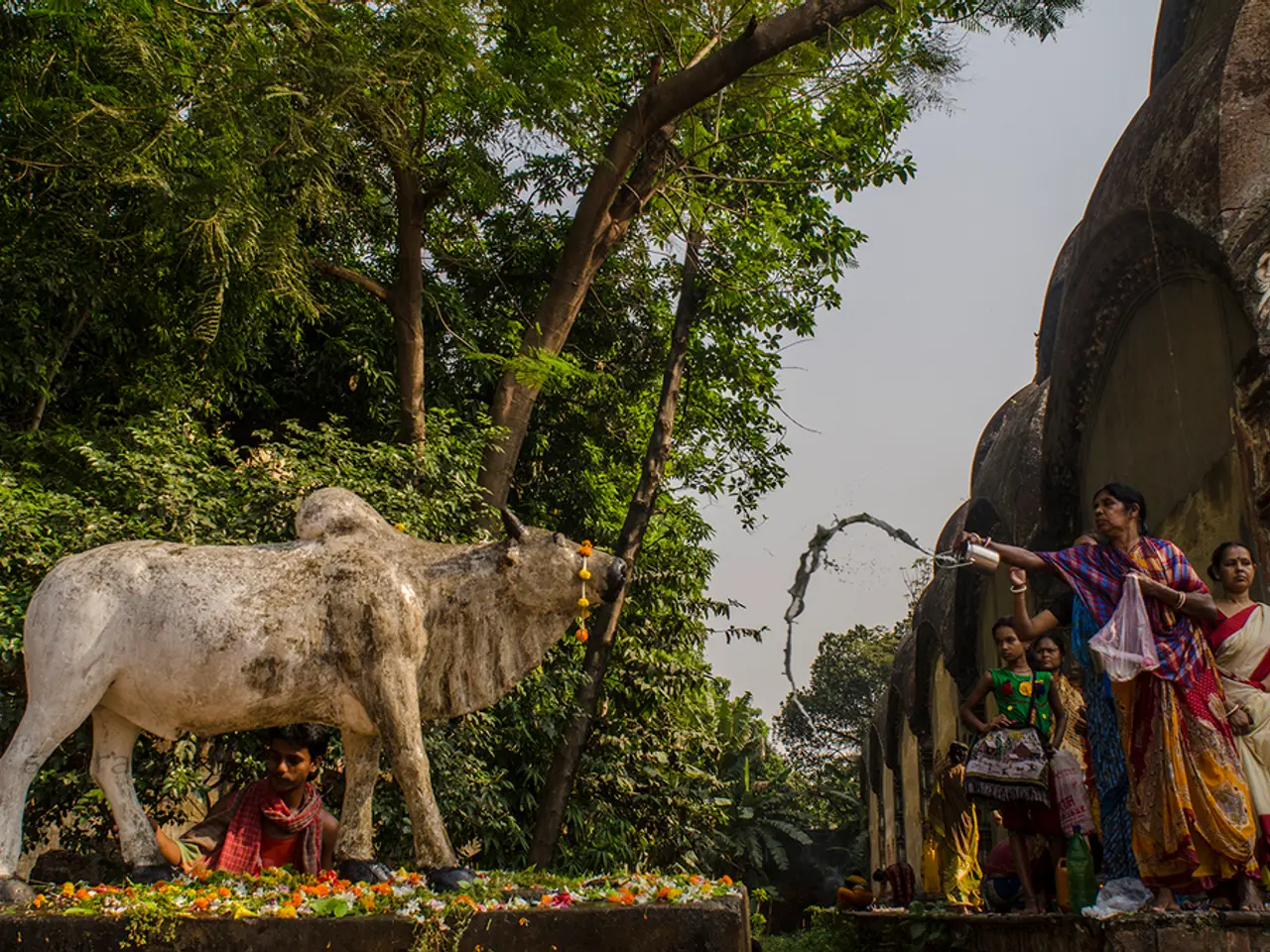Commemoration of Deceased Loved Ones Through Nepal's Gai Jatra Celebration
=====================================================================================
The ancient tradition of Gai Jatra, also known as the Cow Festival, holds a deep historical and cultural significance in Nepal. This unique celebration, which originated in the 17th century during the reign of King Pratap Malla in Kathmandu, serves as a compassionate response to grief and a means of communal healing.
Gai Jatra is a festival that emerges from sorrow, blending mourning with satire, humour, and colourful parades. Historically, families who had lost loved ones during the past year would take out a cow or have children dress as cows and tour the city. This symbolic gesture conveyed a message of shared consolation, helping to transform grief into communal healing.
Over time, Gai Jatra has evolved into an event where participants wear costumes representing cows, gods, and mythical beings, and use satire to comment on social issues. Thousands of people participate in the festival, dressed as cows, with bereaved families offering fruits, bread, beaten rice, curd, and money to participants in the procession.
The festival typically occurs during the monsoon season, linking it to agrarian cycles and abundance alongside spiritual reflection. According to religious belief, the deceased cross a legendary river by grabbing the tail of a cow during their journey to heaven.
The purpose of Gai Jatra is multi-dimensional. It honours and remembers the deceased, bringing the community together in shared mourning and celebration. Humour and satire are used as a therapeutic means to confront grief and social concerns. The festival also marks a significant cultural and religious event in Kathmandu Valley's annual life.
Gai Jatra's evolution reflects a shift from purely a royal consolation ritual to a widely embraced public festival involving diverse communities. Today, it is still practiced, reinforcing social cohesion and cultural identity in Nepal.
In summary, Gai Jatra stands as a significant Nepalese festival with origins in royal history, symbolically uses cows to guide souls, serves a communal mourning and healing purpose, and has evolved into a vibrant cultural event combining reverence, humour, and social expression.
- Discourses on Gai Jatra, the lively festival from Nepal, often include discussions about its historical roots, transformation over time, and its role in modern sustainable-living by promoting communal harmony and cultural preservation.
- The lifestyle and entertainment sector regularly features articles on unique cultural festivals around the world, providing insights into the rich history and contemporary practices of events such as the home-and-garden themed Gai Jatra in Nepal.
- As news platforms strive to cover a wide range of topics, they often delve into opinion pieces that analyze social issues through the lens of traditions, exemplified by the use of satire during Nepal's Gai Jatra festival, a symbol of lifestyle, humor, and sustainable living.




